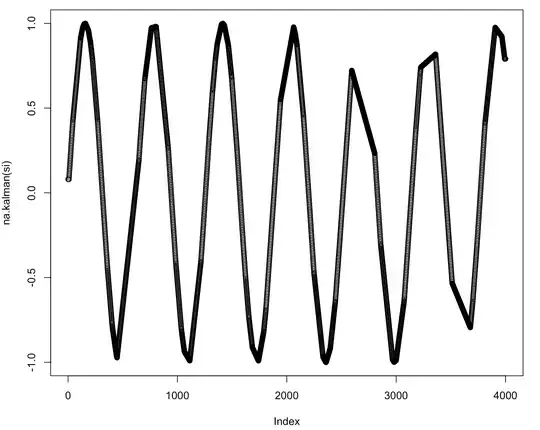I am running an ordinal logistic regression in R to assess the effect of 3 IVs (GDP, n. of bilateral agreements, HDI - all in log) on the diplomatic ranking (DV) ascribed to different countries (ranges from 0 to 3), for a sample of 142 countries.
The model returns very high coefficient values and confidente intervals for HDI in comparison to the other variables. What is a reasonable threshold to check if the effect is true or due to error?
Link to reproducible data is here:
https://1drv.ms/u/s!Au9STQ1wQqQuhKZFKTIHOygjdEx2gw?e=dX7IaJ
R script below:
library(MASS)
csRank <- read.csv(file="CSrank.csv")
csRank$rank <- as.factor(csRank$rank)
# formulas
rankForm <- rank ~ gdp_bi_ln + spRelct_ln + undp_hdim_ln
rankForms <- rank ~ scale(gdp_bi_ln) + scale(spRelct_ln) + scale(undp_hdim_ln)
# regressions
## un-standardized values
polr1 <- polr(rankForm, data=csRank, Hess=T)
summary(polr1)
confint(polr1)
### Odds ratio and Confidence Interval
or1 <- exp(cbind(OR = coef(polr1), confint(polr1)))
or1
## standardized independent variables
polr1s <- polr(rankForms, data=csRank, Hess=T)
summary(polr1s)
confint(polr1s)
### OR and CI
or1s <- exp(cbind(OR = coef(polr1s), confint(polr1s)))
or1s
And the output:
> summary(polr1)
Call:
polr(formula = rankForm, data = csRank, Hess = T)
Coefficients:
Value Std. Error t value
gdp_bi_ln 0.2679 0.1286 2.083
spRelct_ln 0.6138 0.1835 3.346
undp_hdim_ln 15.2589 2.3641 6.454
Intercepts:
Value Std. Error t value
1|2 -3.7208 0.9740 -3.8200
2|3 0.5994 0.9151 0.6550
3|4 3.4857 1.0479 3.3265
Residual Deviance: 164.6138
AIC: 176.6138
(8 observations deleted due to missingness)
> confint(polr1)
Waiting for profiling to be done...
2.5 % 97.5 %
gdp_bi_ln 0.0173982 0.5255147
spRelct_ln 0.2661556 0.9897550
undp_hdim_ln 11.0336190 20.3249321
> or1
OR 2.5 % 97.5 %
gdp_bi_ln 1.307259e+00 1.017550 1.691329e+00
spRelct_ln 1.847509e+00 1.304938 2.690575e+00
undp_hdim_ln 4.235173e+06 61921.266746 6.714379e+08
> summary(polr1s)
Call:
polr(formula = rankForms, data = csRank, Hess = T)
Coefficients:
Value Std. Error t value
scale(gdp_bi_ln) 0.5806 0.2788 2.083
scale(spRelct_ln) 0.8313 0.2485 3.346
scale(undp_hdim_ln) 3.5968 0.5573 6.455
Intercepts:
Value Std. Error t value
1|2 -0.7578 0.3173 -2.3885
2|3 3.5624 0.5150 6.9167
3|4 6.4487 0.7827 8.2391
Residual Deviance: 164.6138
AIC: 176.6138
(8 observations deleted due to missingness)
> confint(polr1s)
Waiting for profiling to be done...
2.5 % 97.5 %
scale(gdp_bi_ln) 0.03770774 1.138963
scale(spRelct_ln) 0.36041268 1.340270
scale(undp_hdim_ln) 2.60079938 4.790910
> or1s
OR 2.5 % 97.5 %
scale(gdp_bi_ln) 1.787183 1.038428 3.123527
scale(spRelct_ln) 2.296250 1.433921 3.820076
scale(undp_hdim_ln) 36.482382 13.474505 120.410941
